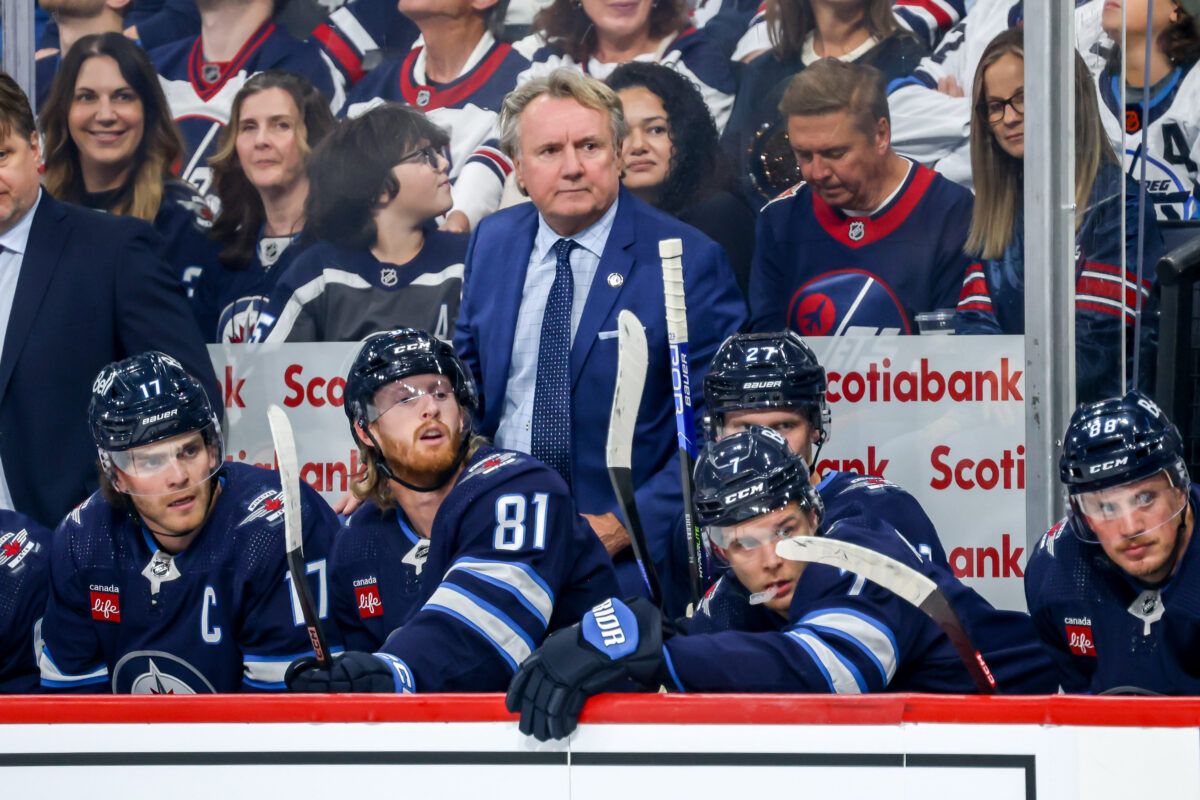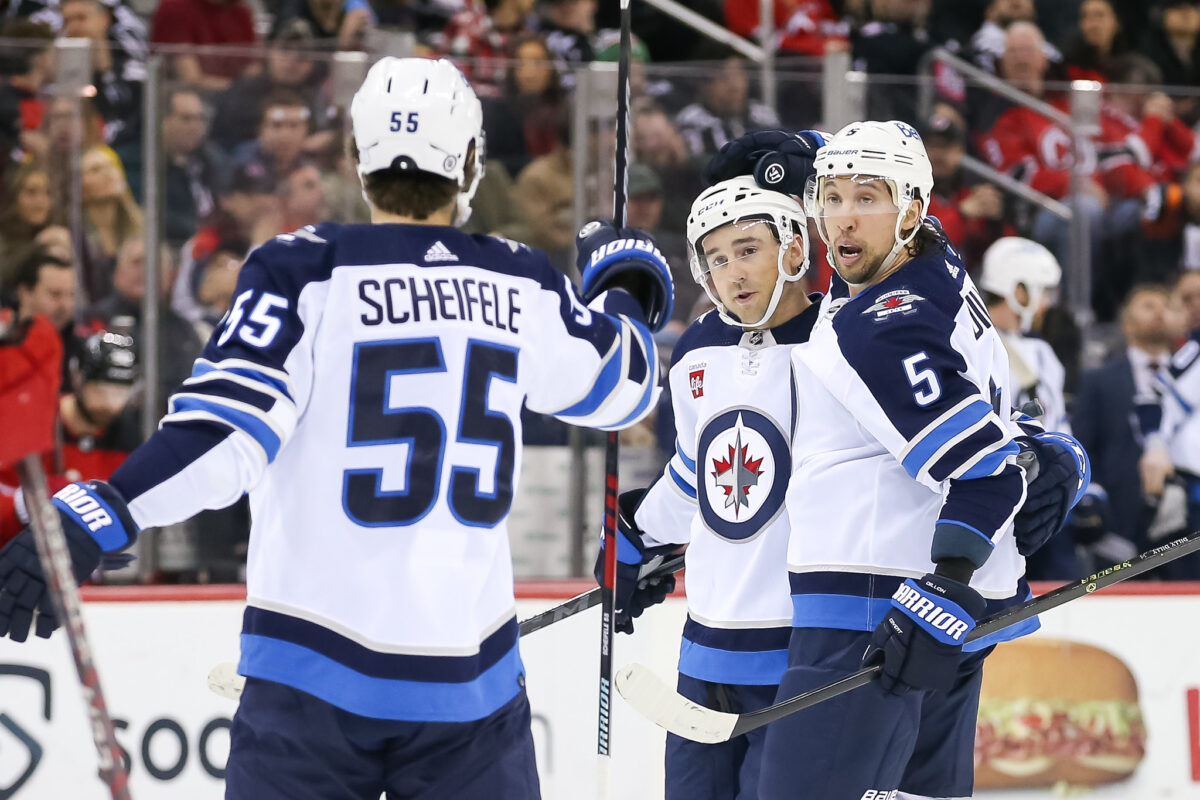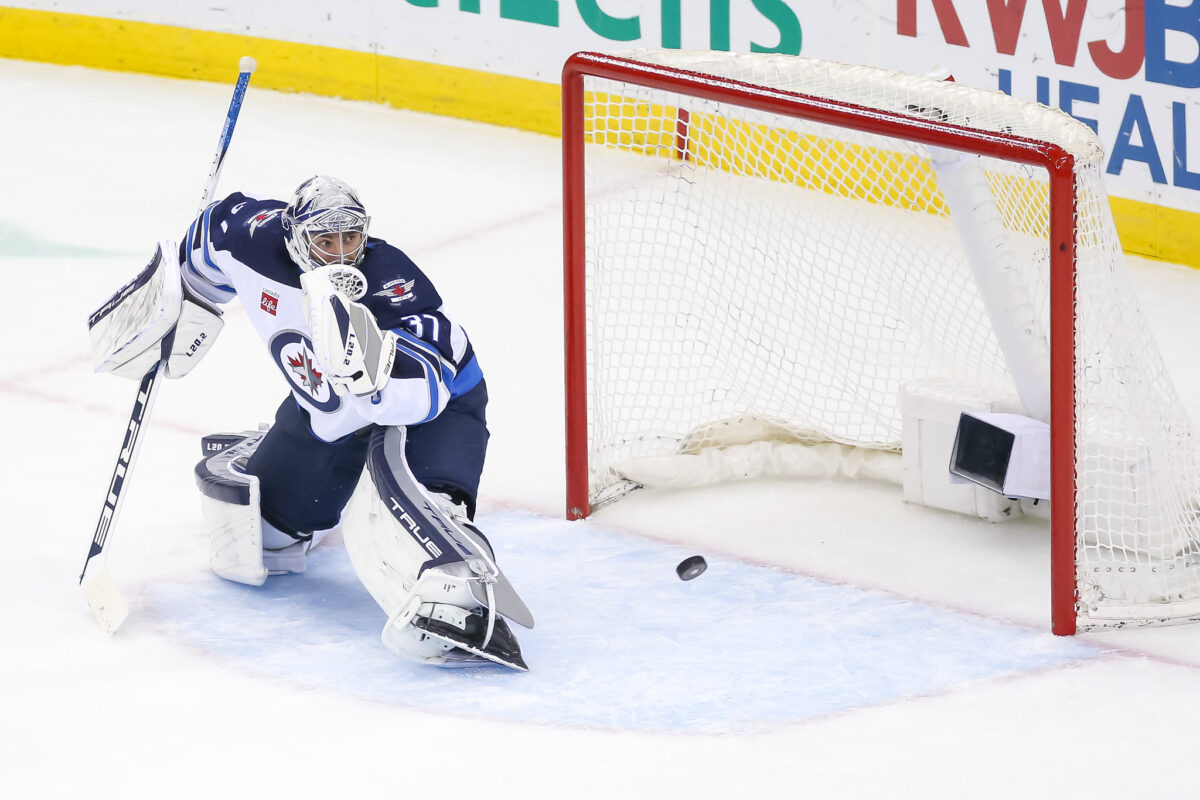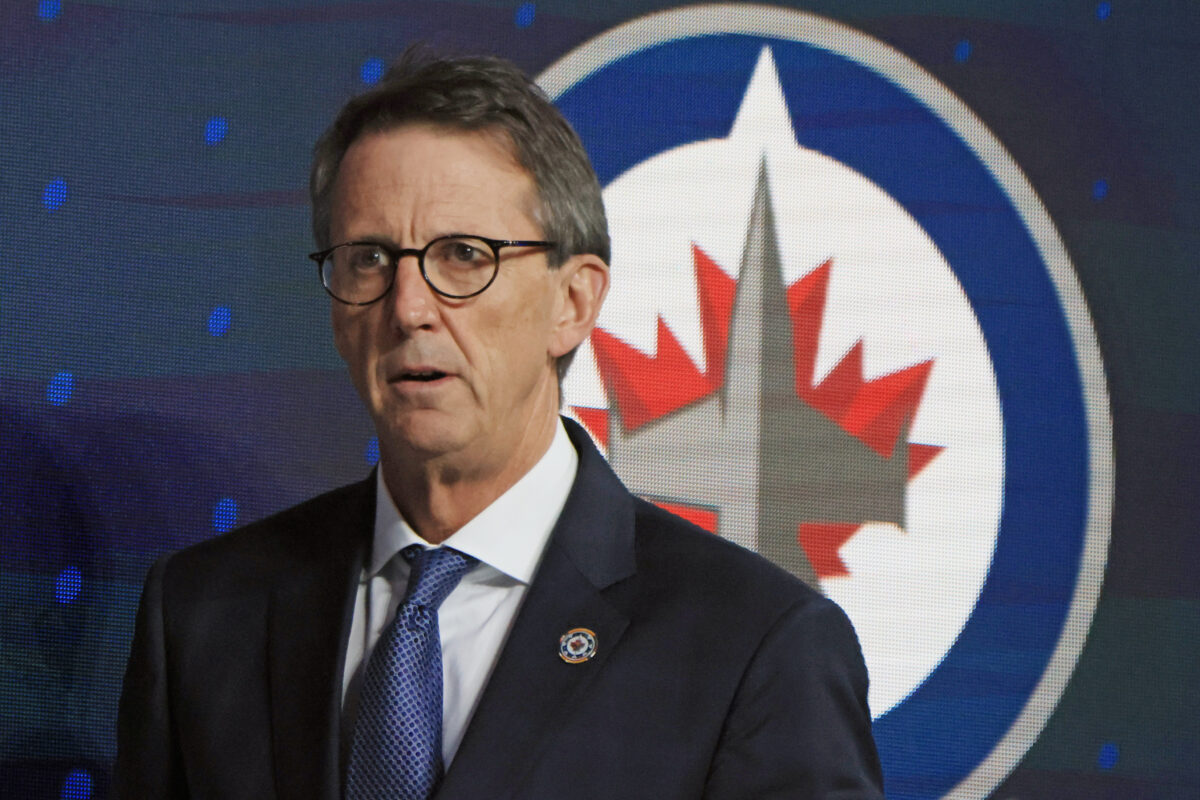The Winnipeg Jets are through their first 10 games of the 2023-24 season and there are plenty of stats to chew on, good and bad. Here’s a look at 10 notable numbers.
10 — Points for The Team
At 4-4-2, the Jets have 10 points and sit fourth in the Central Division.
Related: 3 Keys to Winnipeg Jets Success in November
Their 10 points is two fewer than last season through 10 games: in 2022-23, the Jets had 12 points as they went 6-4-0.
9 — The Highest Individual Point Total
No single Jet has put on an offensive clinic as yet. In fact, no one is even operating at a point-per-game clip, which is getting more and more common as scoring league wide climbs higher and higher. However, the Jets’ attack has been more balanced than in seasons past thanks to their deeper forward group, which has seven players with six-plus points already.
Latest THW Headlines
Kyle Connor (six goals, three assists) and Mark Scheifele (four goals, five assists) are currently tied for the team lead in points with nine each. Connor is off to a quicker offensive start than last season, when he scored only two goals through his first 14 games.
Scheifele is producing points at a higher rate than last season, when he had 68 in 81 games (including a career-high 42 goals) and did not operate at a point-per-game clip for the first time since 2015-16.
5 — Games So Far Without Rick Bowness
Head coach Rick Bowness took a leave of absence on Oct. 23 after his wife Judy suffered a seizure. This author wishes her the best as she recovers and many Jets players have expressed similar sentiments. There is no timeline for Bowness’ return.

Bowness is an experienced and formidable coach whose game plan, when followed, leads to success. He is also well-respected by his players, so his presence is certainly missed. Associate coach Scott Arniel is filling in as interim head coach and he has led them to a 2-1-2 record so far.
12.82 — The Jets’ Power Play Percentage
The Jets’ power play has not shown much power.
Both units have been anemic and predictable and are just five-for-39 for a 12.82 per cent efficiency (25th in the NHL.) They recently snapped a zero-for-16 drought with a fluky third-period power play goal Thursday against the Vegas Golden Knights, but overall have failed to retain possession in the offensive zone or generate dangerous chances. They do a lot of passing around the perimeter, but not much else.
In addition to sapping momentum instead of building it, the lack of power play success has led to points left on the table. Man-advantage ineptitude was the difference in their two most recent losses: they fell in a shootout to the Montreal Canadiens on Oct. 28 and in overtime to the New York Rangers on Oct. 30 and both times, they entered the three-on-three extra frame on a power play that went unconverted.
69.44 — The Jets’ Penalty Killing Percentage
As bad as the Jets power play, if not worse, has been their penalty kill.
They have killed off just 69.44 per cent of their penalties (the third worst in the NHL) and have allowed at least one power play goal in nine of 10 games. That’s a far cry from the 82.43 per cent efficiency a stout and strong contingency operated at last season to finish seventh-best in the league, and even worse considering how ineffective the power play has been.
Related: Jets’ Special Teams Continues to Cost Them Wins
Like a strong power play, a strong penalty kill can give a team momentum. The most recent time the Jets failed to grab that momentum was Thursday, when the Golden Knights scored twice (and rather easily, at that) on a Mason Appleton high-sticking double minor to turn a 1-1 second-period tie into a 3-1 lead. The pair of goals came just after the Jets had tied the game and were controlling play.
Two other late power play goals have burned the Jets: Mika Zibanejad’s game-tying goal on Oct. 30 against the Rangers and Jack Eichel’s game-winner with less than five minutes to go on Oct. 19 against the Golden Knights. Both show how an opportune man-advantage marker can be the difference in a game.
The Jets will either have to vastly improve on the penalty kill or alter their game and lower their risk profile to stop taking penalties. The Jets allowed the 21st fewest power plays last season, but have allowed the 11th most power plays this season.
52.82, 55.97 — The Jets Expected Goals For and CORSI For Percentages at Five-on-Five
The Jets have consistently out-chanced and out-possessed their opponents at five-on-five and have found ways to control play for long stretches. Unfortunately, the special teams struggles are undoing all that good work.
The Jets’ expected goals for percentage of 52.82 shows they have had more quality shots than their opponents. (Expected goals for is a stat that takes shot location, shot type, and other factors into account and gives a shot a value based on historical success rates for that shot becoming a goal.)

Although the Jets have outscored their opponents 29-23 at even strength, they nonetheless have a -5 goal differential due to the 11 power play goals (and one shorthanded goal) they’ve given up.
The Jets’ 55.97 Corsi Percentage shows they have possessed the puck more than their opponents at five-on-five, and the team that possess the puck more in a game usually gets more chances and wins… unless they give up multiple power play goals.
3.09, .891 — Connor Hellebuyck’s Goals Against Average and Save Percentage
Connor Hellebuyck has had a poor start to his season by his own standards and by his paycheque’s.
The goaltender’s play has been uneven and at times, he has downright floundered in his first eight starts after signing a massive seven-year contract extension on Oct. 9 that will keep him one of the league’s highest-paid net minders through 2030-31.
Most recently, he gave up four goals on 25 shots against the Golden Knights, the fourth time he’s allowed four-plus goals in a game. The performance was a step back considering he’d gone 3-0-1 record and allowed just six goals in the four starts prior and was seemingly back on track.

Hellebuyck’s first three starts were rough — he let his team down in the season opener by allowing four goals on just 21 shots against the Calgary Flames in a game the Jets dominated throughout, allowed four goals on 33 shots in the home opener against the Florida Panthers — including two goals in quick succession late in the third that saw a comfortable 5-2 lead change to a nail-biting 5-4 one before an empty netter saved him — and allowed five goals on 29 shots against the Los Angeles Kings.
Overall, Hellebuyck’s numbers are subpar considering he’s thought of as one of the league’s elite goaltenders: a 3.09 GAA,, .891 SV%, an ugly -3.5 goals saved above average, and only three quality starts.
The Jets will hope they’ll get the big, boring, and positionally sound Hellebuyck — the one had a 2.49 GAA, .920 SV%, and a .688 quality start percentage last season — going forward.
11,838 — The Average Attendance at Canada Life Centre
Big blocks of empty seats each game at Canada Life Centre have turned into a big story for a market that has already lost a team.
The Jets are averaging 11,838 fans per game this season, far short of the current 15,325 capacity and second worst in the NHL (only the Arizona Coyotes, who play in a 5,000 seat university arena, have lower attendance figures.) By capacity, they are 30th at 78.9 per cent, behind only the Buffalo Sabres and San Jose Sharks.
It’s not as if the five home dates so far have been without with intrigue. Each have had something that should have motivated fans to come out and fill up the downtown arena.
| Game | Attendance |
| Oct. 14 vs Florida Panthers | 13,410 |
| Oct. 17 vs Los Angeles Kings | 11,226 |
| Oct. 19 vs Vegas Golden Knights | 11,521 |
| Oct. 24 vs St. Louis Blues | 11,136 |
| Oct. 30 vs New York Rangers | 11,898 |
Oct. 14 against the Panthers was the home opener and saw the return of former head coach Paul Maurice, Oct. 17 versus the Kings saw the return of of Pierre-Luc Dubois, Oct. 19 saw the defending Stanley Cup champion come to town, Oct. 24 was against Central Division rival St. Louis Blues, and Oct. 30 against the Rangers saw the return of former captain Blake Wheeler.
Still, tickets haven’t sold like hotcakes, and in fact the figures for the Kings and Blues games are the two lowest in Jets 2.0 history (not including games played in front of limited crowds due to COVID-19 capacity restrictions.) It’s a real departure for a franchise that sold out 332-consecutive home games between the inaugural 2011-12 season and October, 2019.
However, in a 20-minute interview with TSN’s Darren Dreger last week, the True North Sports & Entertainment executive chairman Mark Chipman posed the issue as a challenge to overcome, not an existential threat.

Chipman cited the COVID-19 pandemic, current economy, and low number of business/corporate ticket holders as factors, but promised there’s no chance the team will relocate and outlined what TNSE is doing to earn their customer base back.
Related: Jets’ Chipman Confident in Winnipeg and Better Future Attendance
“I can see how you would ask that question because it happened once,” Chipman said to Dreger’s question about the potential threat of a sale. “Is it a concern it could happen again because it’s the smallest market? I say not on our watch. We’ve been doing this far too long – we got into this for the very reason of that heartbreak you described. It was that very emotion that brought us into this, that kept us in the fight, to get a building built and then to acquire a team again.”
“And then to have 10 years of sellouts and then two years of challenge brought on by a global pandemic? It would be a little extreme for us to say, ‘Oh gee, we’re not sure this works anymore,’” he continued. “That would be far less than savvy – that would be really un-savvy.”
Mark Chipman
